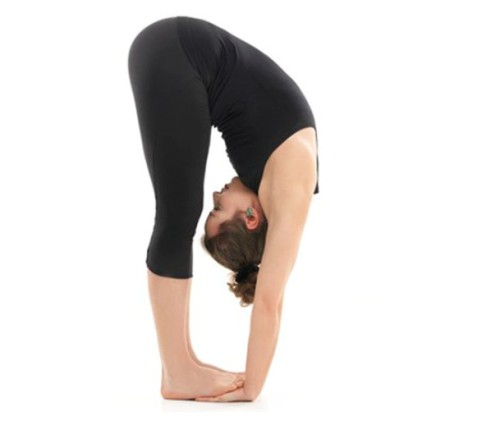Padangusthasana – Big Toe Pose
Introduction:
Padangusthasana is derived from the combination of the Sanskrit words Pada(Foot),Angusta(Big Toe) and asana (posture or pose). It is called as Big Toe Posein English.
Preparatory Poses for Padangusthasana are Intense Forward Bending Pose (Uttanasana), Downward Facing Dog Pose (Adho Mukha Svanasana), Mountain Pose (Pashchimottanasana) and Reclining Big Toe Pose (Supta Padangusthasana); and the Follow Up Poses are Triangle Pose (Trikonasana) and Chair Pose (Utkatasana).
Padangusthasana is one of the easiest Asana with practise. It stretches the whole body from top to bottom.
Steps Involved:
- Start with stand straight
- Feet should be parallel to each other (At least six inches apart from one foot to another).
- Legs should be straight.
- Slowly bend forward.
- Try to touch the forehead to your knees.
- Please make sure that, when you bend forward, your head and torso should move together.
- Try to hold your big toe with the fingers of the respective side.
- Clutch the big toe.
- Inhale; Lift the torso.
- Straighten your elbows.
- Exhale; Bend towards the toes again.
- Do this a few times.
- Straighten the body.
- Breathing should be normal and constant.
- Exit the pose, by come back to the standing position.
- Repeat the entire above step few times (three to five times).
Benefits:
- Stimulates the kidneys, liver and spleen.
- Stretches the calves, hamstrings and thighs.
- Eliminates the excess gas in the body.
- Relieves the symptoms of menopause.
- Strengthens the knees.
- Improves the digestion.
- Strengthens the legs, bones and spine.
- Reduces the headache and insomnia.
- Improve the flexibility.
- Improves the concentration.
- Control the nervousness.
- Regulates the blood flow to the entire body.
- Helps to cure the high blood pressure.
- Reduces the anxiety and stress.
- Reduces the diabetes.
- Stretching arms, back, calf muscles and knees.
- Calms the brain.
Dos, Don’ts and Tips:
People with the following problem please avoid practising this pose, or practise under the expert’s supervisions and doctor’s advice.
- Lower back problems
- Weak ankles
- Neck injuries
Practise this yoga daily, will yield the better results.
It’s good to do this pose in the morning with empty stomach.
Do not stretch too much. Know your limits. By regular practise one can master this pose very easily. If you find any pain or discomfort while practising this pose, please exit the pose, and ask for the expert’s help.

